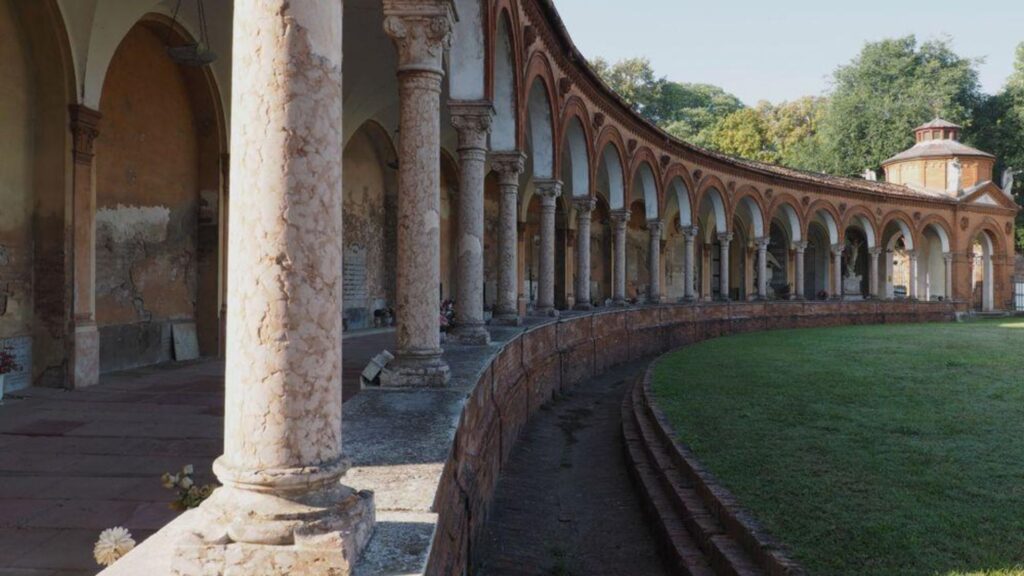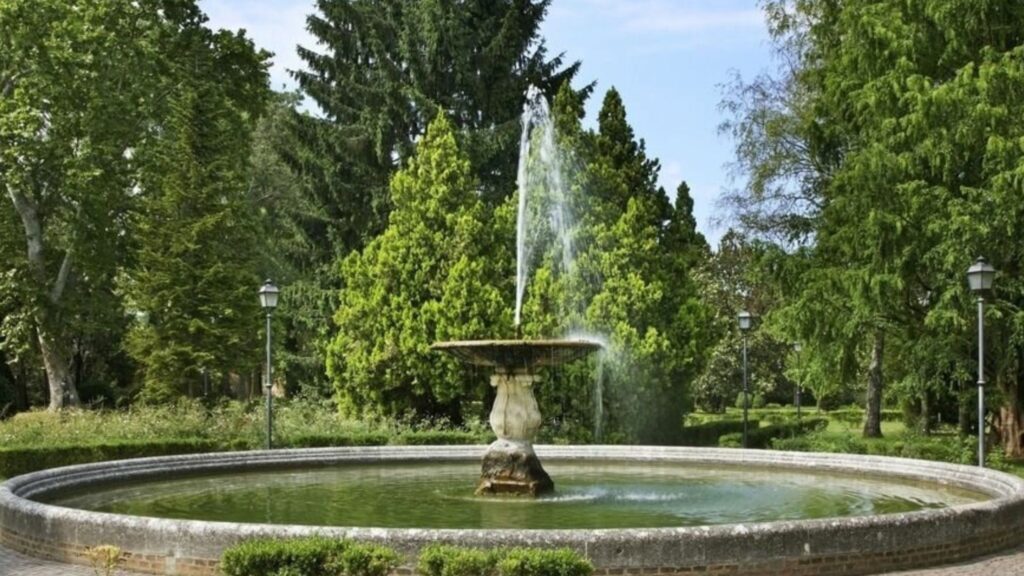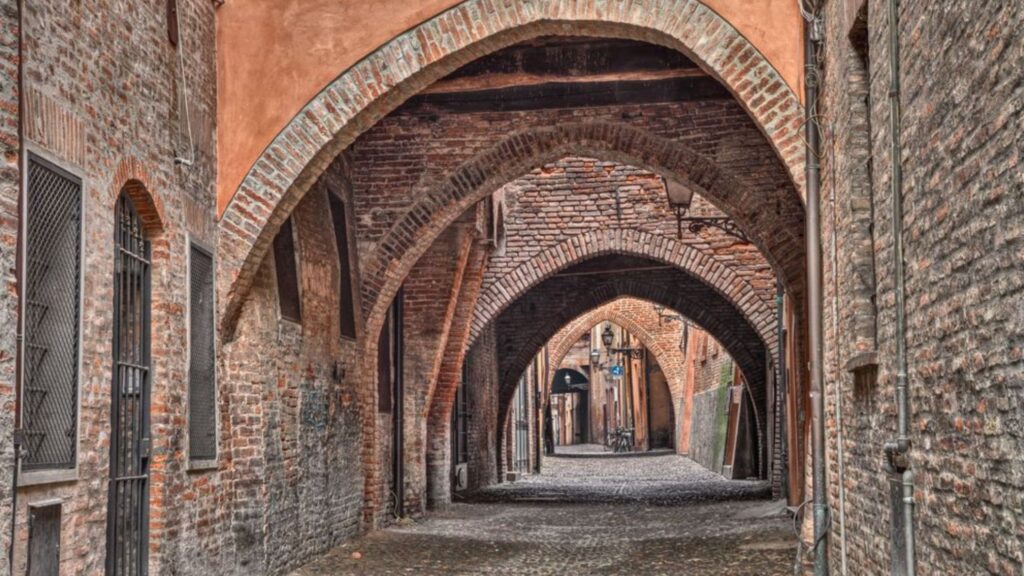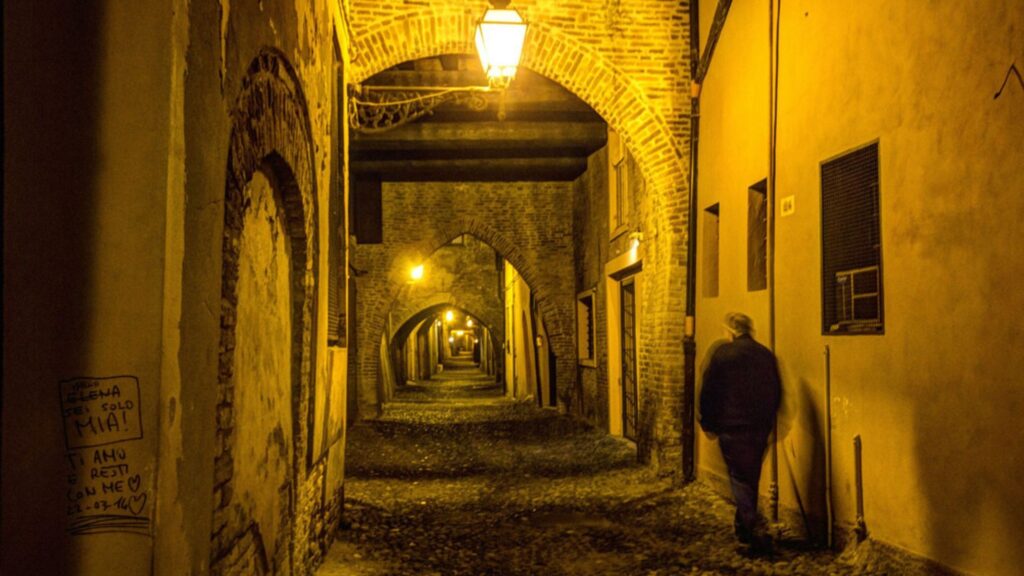Ferrara Experiences
1
Ferrara: An Itinerary Among the City’s Icons
A perfect itinerary for those visiting Ferrara for the first time, to experience its discreet elegance and timeless charm. The journey begins in Piazza Trento e Trieste, the city’s ancient marketplace and medieval hub, dominated by the Cathedral of San Giorgio, whose Romanesque-Gothic portal already tells the power of the Este family.
Not far away rises the imposing Castello Estense, the undisputed symbol of the city, surrounded by its water-filled moat and four corner towers. Inside, visitors can explore prisons, frescoed loggias, ducal kitchens, and panoramic terraces with views over the city.
The route then leads to the Quadrivio degli Angeli, one of the most refined corners of Renaissance Ferrara, home to the famous Palazzo dei Diamanti, renowned for its “sparkling” façade of more than 8,000 diamond-shaped blocks, and hosting major art exhibitions.
Ferrara is also known as the city of bicycles, and the best way to enjoy it is by cycling along its remarkably well-preserved walls—a 9 km green ring surrounding the center, offering peaceful views perfect for a pause in nature.
The tour ends with a relaxed stroll through the Jewish Ghetto, among art shops, independent bookstores, and cozy eateries where you can taste cappellacci di zucca with butter and sage or the traditional salama da sugo, a dish with a bold, distinctive flavor.
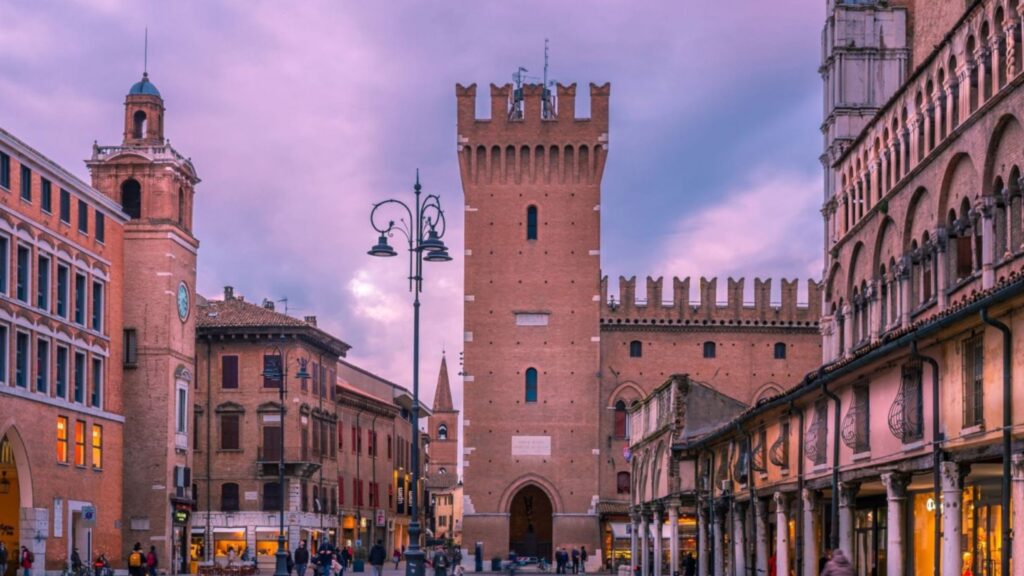
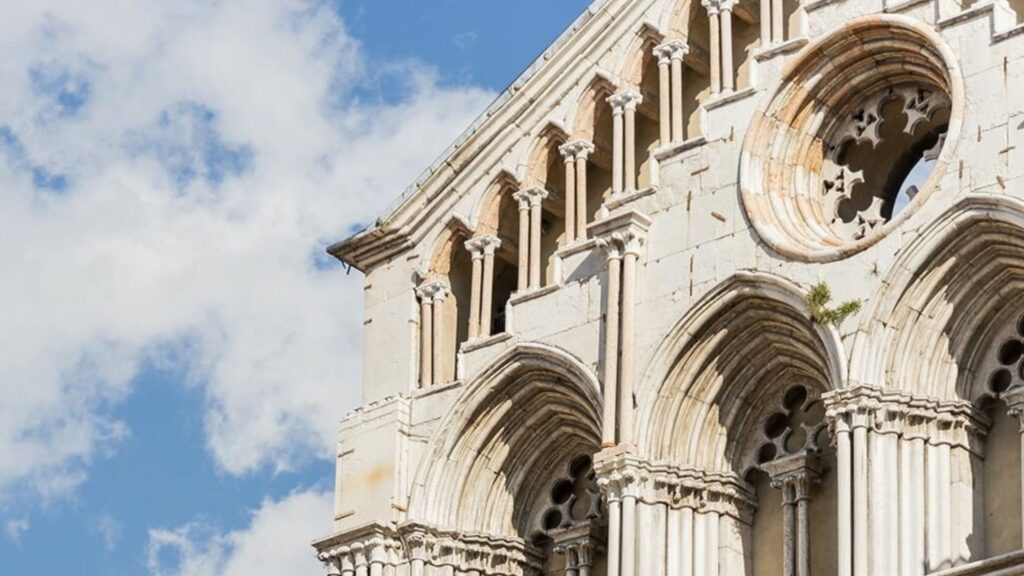
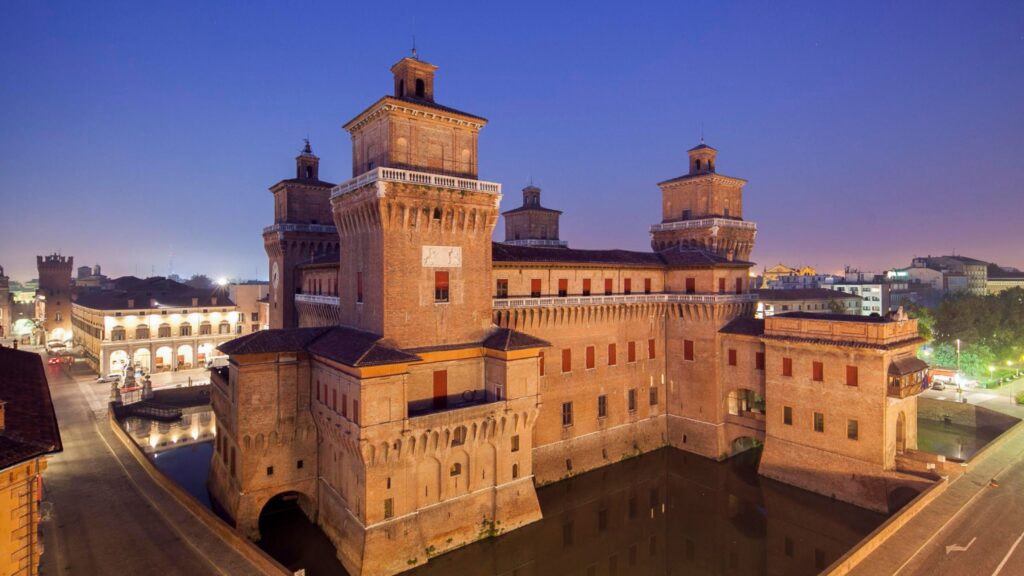
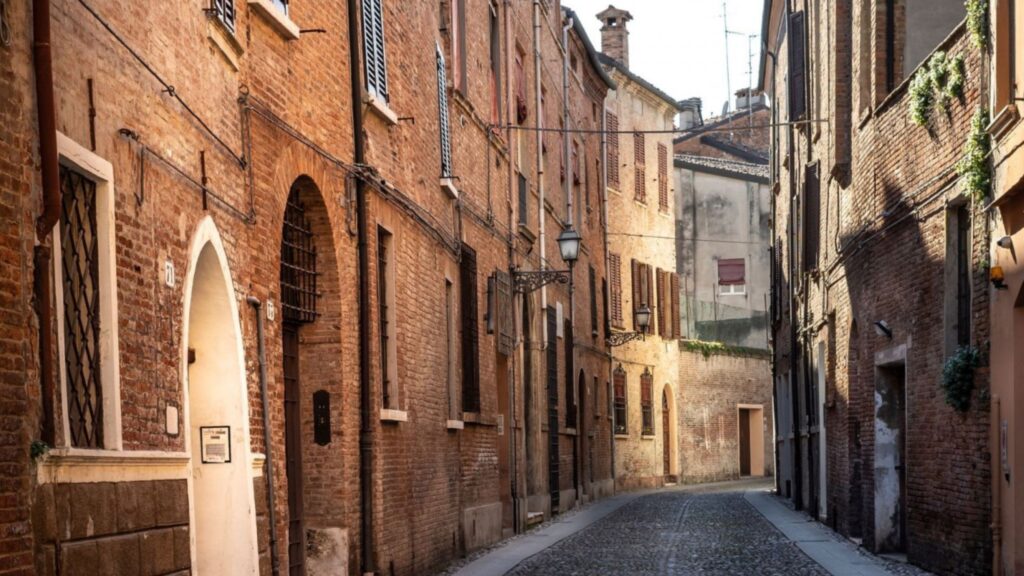
2
From Ferrara to the Delizia di Schifanoia: Art, Symbols, and Wonder
An itinerary combining Renaissance art with a walk through some of Ferrara’s most authentic neighborhoods. Starting from the center, a short walk or bike ride leads to Palazzo Schifanoia, one of the most fascinating Este “delizie.” Its very name—schivar la noia (“to escape boredom”)—reveals its purpose as a place of leisure and pleasure for the Este court. Inside, the Hall of the Months is an extraordinary masterpiece of 15th-century Ferrarese art: a fresco cycle blending astrology, mythology, and courtly life with surprising vibrancy.
Along the way, it’s worth stopping at the Gardens of Via Garibaldi, a small urban green space much loved by locals. From there, head to the evocative Church of Santa Maria in Vado, tied to a miraculous Eucharistic event in the 15th century.
For those who love exploring through taste, the itinerary can end at the Covered Market, filled with typical products, artisanal pastry shops, and historic cafés where you can try the famous tenerina chocolate cake or a glass of Fortana, the red wine symbol of the region.
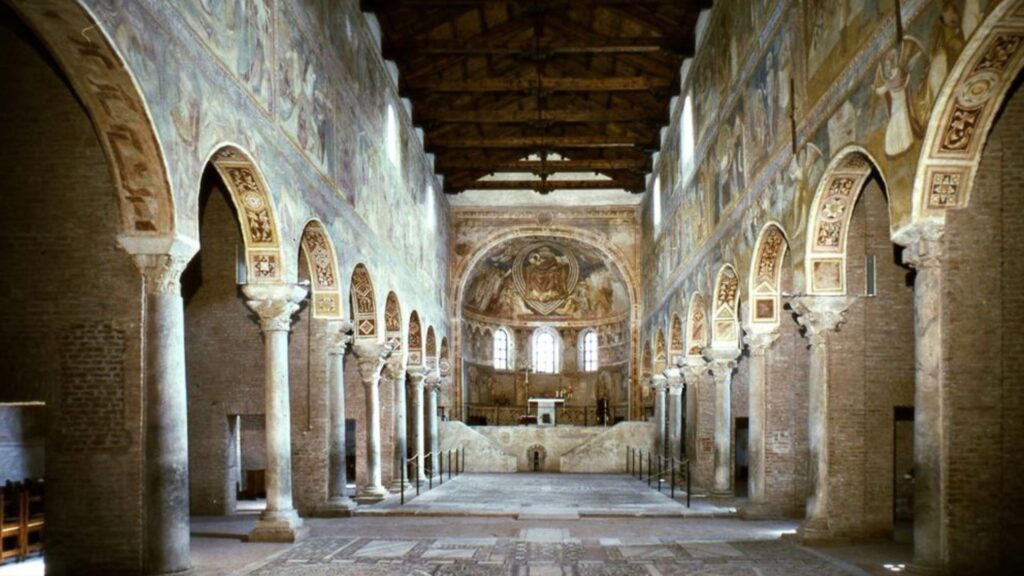

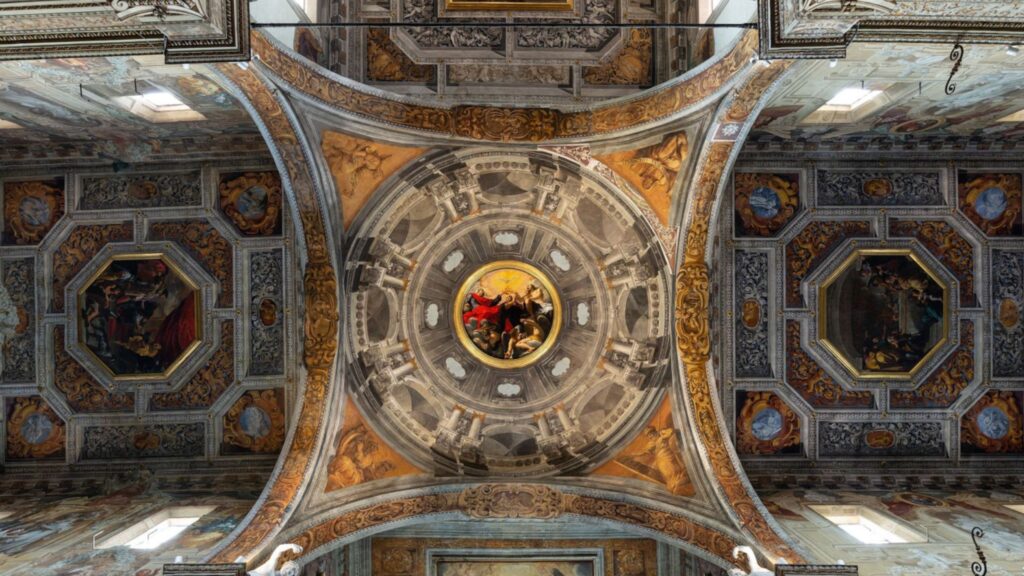

3
Between Shadows and Lights
A path for those wishing to discover a Ferrara beyond the classic itineraries—quiet, intimate, and almost suspended in time. It begins at the Monumental Charterhouse, a former monastery transformed into a monumental cemetery: a place of peace and beauty, with tree-lined avenues and neoclassical sculptures.
From here, step into Parco Massari, the city’s largest park, perfect for a break among century-old trees, fountains, and strolling families.
A little further on, the Giardino delle Duchesse is a hidden green gem behind the medieval walls, often overlooked but full of atmosphere.
In the late afternoon, a walk along Via delle Volte is a must: the most iconic street of medieval Ferrara, with its stone arches, hushed silences, and the warm light of sunset that makes it almost cinematic.
For poetry lovers, the Ariosto House Museum, birthplace of the great poet Ludovico Ariosto, reveals intimate details about the cultural life of Ferrara in the 16th century. For another touch of wonder, there is Palazzo Costabili, also known as “Palazzo of Ludovico il Moro,” with its small Renaissance garden and the frescoes of the Hall of the Treasury.
The day ends in one of the historic center’s osterie, where time seems to stand still—perhaps with a glass of wine, a traditional dish, and the silence of cobbled streets as background music.
